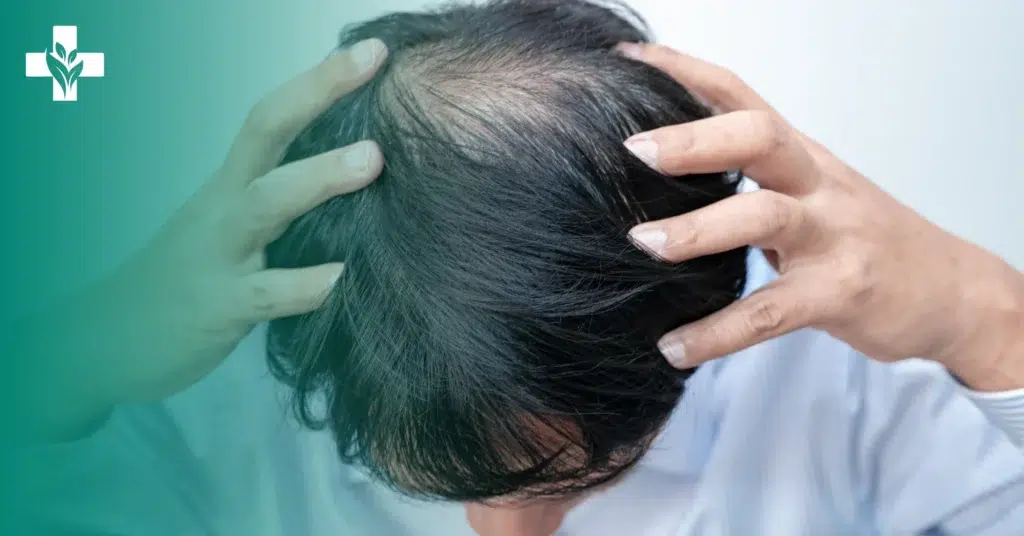Unveiling the Truth: Does Finasteride Work for Hair Loss?
Finasteride is commonly prescribed to address hair loss and Benign Prostatic Hyperplasia (BPH) in men. Despite its widespread use, the effectiveness of Finasteride has been a subject of controversy, with some questioning its efficacy.
While some individuals experience positive outcomes, others express concerns about potential side effects like sexual dysfunction and mood changes.
According to reports, 99.4 percent of men who used oral Finasteride tablets showed improved hair growth. This article aims to delve into the question, ‘Does Finasteride work?’ and examine the available evidence surrounding its effectiveness.
Understanding Finasteride and hair loss
Originally developed to treat Benign Prostatic Hyperplasia (BPH), Finasteride blocks the conversion of Testosterone to Dihydrotestosterone (DHT), a hormone linked to prostate enlargement.
In addition to its effectiveness in managing BPH symptoms, Finasteride also addresses Male Pattern Baldness by reducing DHT levels in the scalp, thereby slowing or reversing hair loss.
Administered orally, Finasteride is FDA-approved for these purposes, though concerns about potential side effects prompt ongoing debate over its efficacy. However, many users report positive results, highlighting its significance in managing both BPH and hair loss.
How effective is FinasterideÂ

Finasteride has proven highly effective in treating hair loss, particularly Male Pattern Baldness. Clinical trials consistently demonstrate that oral Finasteride encourages hair growth and halts further hair loss in a significant portion of men with Androgenetic Alopecia.
Research suggests that the hair count improvement seen after one year of Finasteride treatment continues over two years. Many users experience mild enhancements in hair density and thickness after three to four months, with more significant results typically appearing after a year.
Notably, after one year of taking Finasteride, 48% of individuals observe hair regrowth, a figure that increases to 66% after two years. Overall, Finasteride has been shown to increase hair growth, boost hair count, and improve hair appearance.
Various factors influencing its effectiveness include age, severity, and duration of hair loss, as well as consistency of use and medical conditions or medications.
Studies on Finasteride
Numerous studies have examined Finasteride’s effectiveness for treating both BPH and hair loss, providing valuable insights.
Benign Prostatic Hyperplasia (BPH)
A meta-analysis of 49 clinical trials involving over 11,000 men found that Finasteride effectively reduced BPH symptoms, resulting in improved urine flow and reduced prostate size.
Additionally, another study reported a significant 50% reduction in the risk of acute urinary retention associated with Finasteride use. These findings underscore the efficacy of Finasteride in managing BPH symptoms and reducing the risk of complications.
Hair loss
A randomized controlled trial involving 1553 men with Androgenetic Alopecia demonstrated that Finasteride was associated with a significant increase in hair count compared to placebo. Moreover, another study found that Finasteride effectively maintained hair count over a five-year period.
These findings suggest that Finasteride is an effective treatment for both BPH and hair loss. However, it is important to note that the medication may not work for everyone. It is essential for individuals considering Finasteride to talk to a healthcare professional about its risks and benefits.
Conclusion
In conclusion, Finasteride is widely prescribed for Male Pattern Baldness and Benign Prostatic Hyperplasia (BPH). Despite some controversy, numerous studies confirm its effectiveness. By blocking the conversion of Testosterone to Dihydrotestosterone (DHT), Finasteride manages BPH symptoms and slows hair loss.
While concerns about side effects persist, research consistently shows Finasteride’s ability to stimulate hair growth and halt further loss. With many users experiencing long-term benefits, it remains a significant therapeutic option.
Frequently Asked Questions
Does Finasteride actually regrow hair?
Finasteride has been shown to increase hair count and improve hair density in men with Androgenetic Alopecia. While it may not regrow hair in every individual, it can help to slow down or even reverse hair loss.
What is the success rate of Finasteride?
Finasteride effectively addresses both hair loss and BPH. Studies demonstrate up to 90% of men experience improved hair count and density after consistent 12-month use, while it reduces BPH symptoms and enhances urinary flow in approximately 50-70% of men.
How long does it take for Finasteride to work?
It can take several months of consistent Finasteride use for hair loss to slow down or reverse, sometimes requiring up to a year for noticeable results. Similarly, for BPH, improvements in symptoms and urinary flow rates may take a few weeks to months to show results.
Does Finasteride stop balding permanently?
No, it does not. Finasteride slows down Male Pattern hair loss but doesn’t permanently halt or reverse it. Despite its effectiveness in slowing hair loss, the natural progression of balding will persist over time.
WowRx uses only high-quality sources while writing our articles. Please read our content information policy to know more about how we keep our content reliable and trustworthy.






